PowerPoint 2010 -
Slide Basics

PowerPoint 2010
Slide Basics


/en/powerpoint2010/getting-started-with-powerpoint/content/
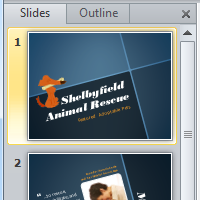
PowerPoint includes all of the features you need to produce professional-looking presentations. When you create a PowerPoint presentation, it is made up of a series of slides. The slides contain the information you want to communicate with your audience. This information can include text, pictures, charts, video, and sound.
Before you begin adding information to slides, you'll need to know the basics of working with slides. In this lesson, you will learn how to insert new slides, modify a layout, and change your presentation view.
Every PowerPoint presentation is composed of a series of slides. To begin creating a slide show, you'll need to know the basics of working with slides. You'll need to feel comfortable with tasks such as inserting a new slide, changing the layout of a slide, arranging existing slides, changing slide view, and adding notes to a slide.
Optional: You can download this example for extra practice.
Slides contain placeholders, which are areas on the slide that are enclosed by dotted borders. Placeholders can contain many different items, including text, pictures, and charts. Some placeholders have placeholder text, or text you can replace. They also have thumbnail-sized icons that represent specific commands such as Insert Picture, Insert Chart, and Insert ClipArt. In PowerPoint, hover over each icon to see the type of content you can insert in a placeholder.
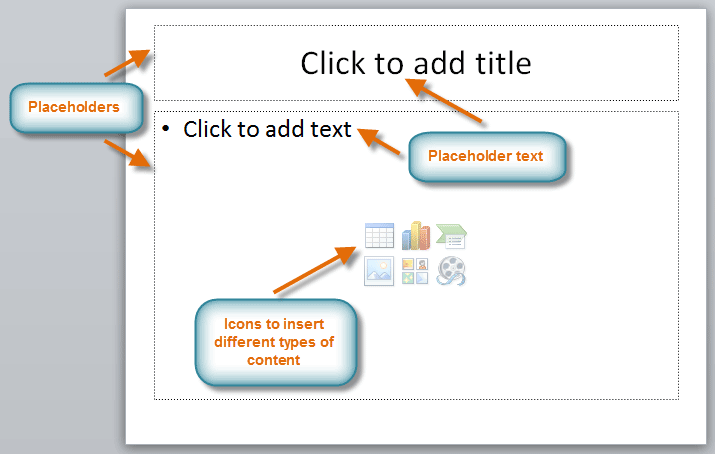 PowerPoint slide with placeholders
PowerPoint slide with placeholdersPlaceholders are arranged in different layouts that can be applied to existing slides or chosen when you insert a new slide. A slide layout arranges your content using different types of placeholders, depending on what information you might want to include in your presentation.
In the example above, the layout is called Title and Content and includes title and content placeholders. While each layout has a descriptive name, you can also tell from the image of the layout how the placeholders will be arranged.
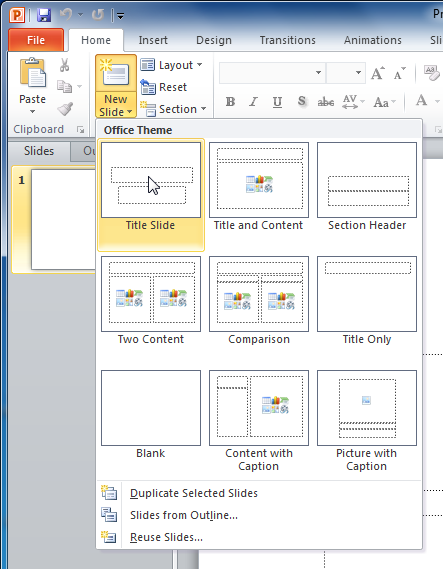 Slide layout menu
Slide layout menu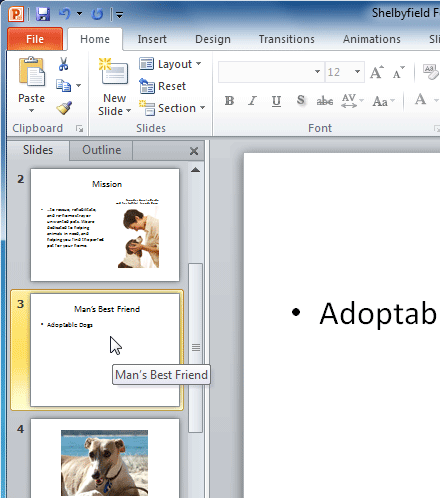 Selecting a slide
Selecting a slide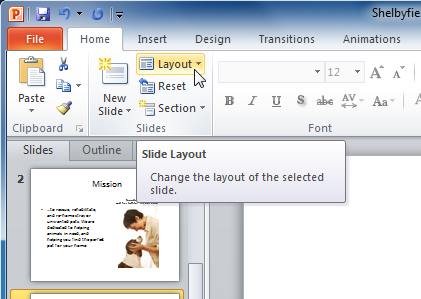 Layout command
Layout command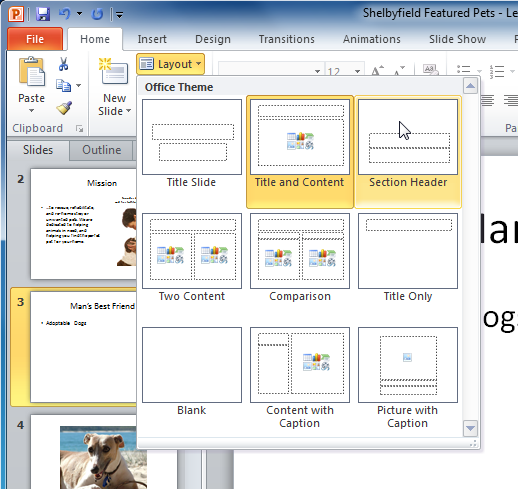 Choosing a layout
Choosing a layoutYou can easily customize your layout by deleting unwanted—or extra—placeholders from any slide.
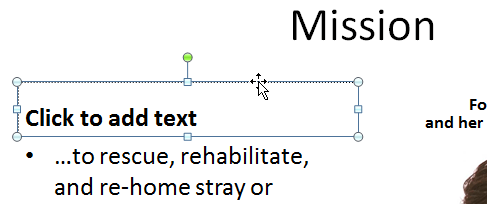 A selected placeholder
A selected placeholderText boxes allow you to add to your current layout, so you can place text wherever you want on your slide.
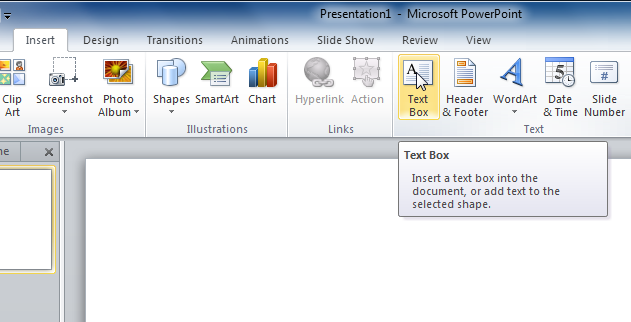 Text Box command
Text Box command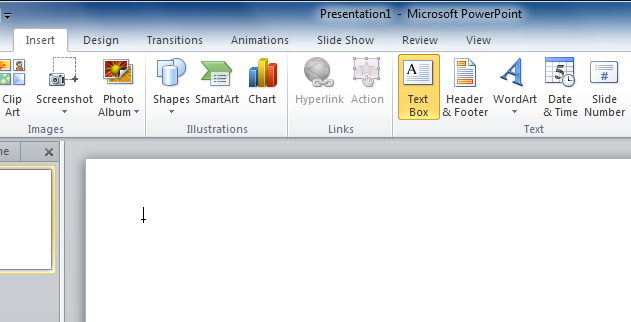 Text Box cursor
Text Box cursor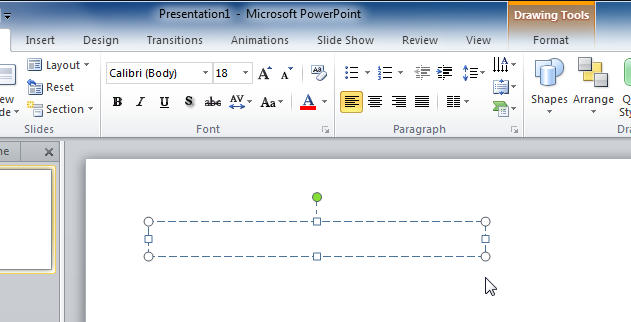 A text box
A text boxExplore our Text Basics lesson to learn more about inserting and using text boxes in PowerPoint 2010.
For more control over your content, you may prefer a blank slide—a slide without placeholders—over one of the existing layouts. Blank slides can be customized by adding your own text boxes, pictures, charts, and more.
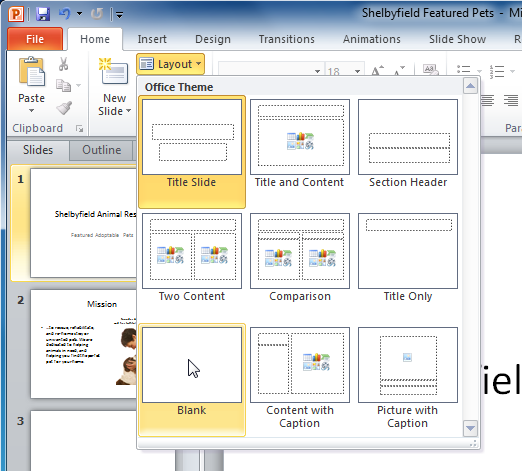 Choosing a blank slide
Choosing a blank slide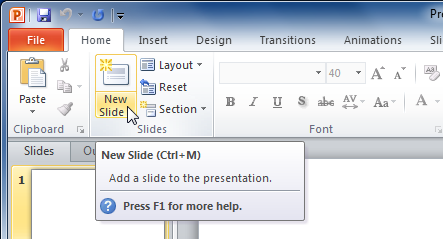 New Slide command
New Slide command Choosing a slide
Choosing a slideTo instantly add a slide that uses the same layout as the one you have selected, click the top half of the New Slide command.
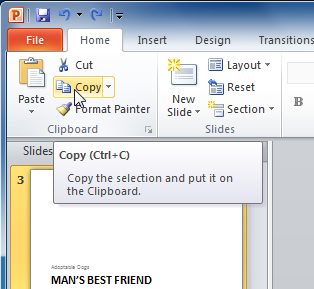 Copy command
Copy command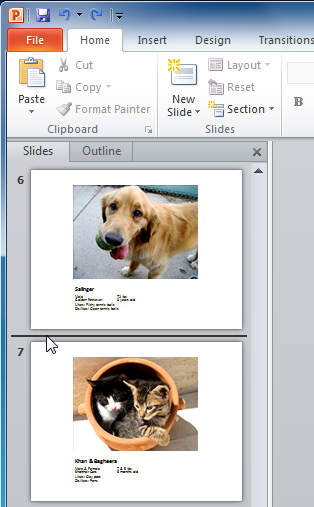 Slide insertion point
Slide insertion point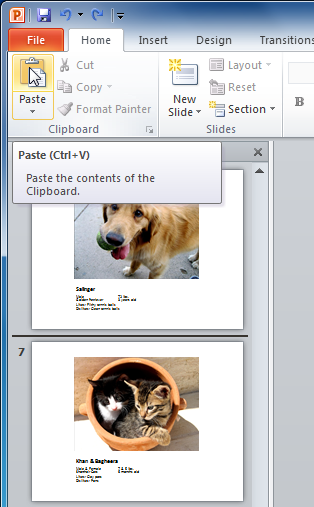 Paste command
Paste commandTo select multiple slides, press and hold Ctrl on your keyboard and click the slides you want to select.
An alternative to copying and pasting, duplicating slides copies the selected slide and—in one step—pastes it directly underneath. This feature does not allow you to choose the location of the copied slide, nor does it offer Paste Options for advanced users, so it's more convenient for quickly inserting similar slides.
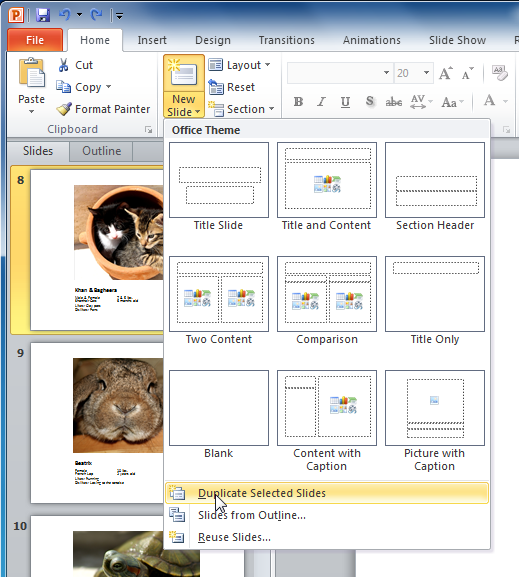 Duplicate Selected Slides command
Duplicate Selected Slides command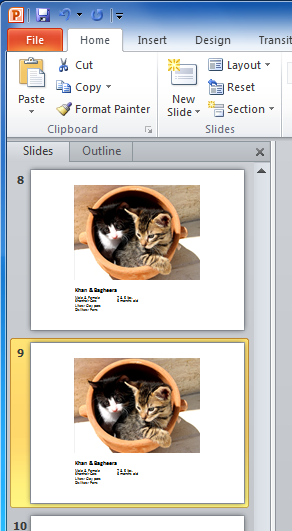 A duplicated slide
A duplicated slide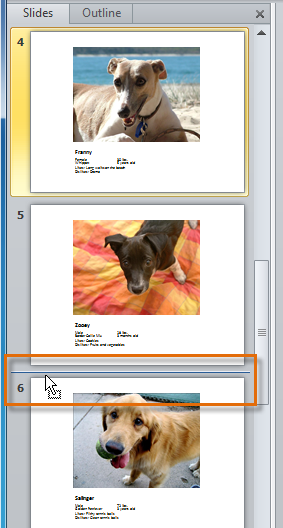 Slide insertion point
Slide insertion pointAs you add slides to your presentation, PowerPoint offers a variety of views and tools to help you organize and prepare your slide show.
It's important to be able to access the different slide views and use them for various tasks. The slide view commands are located on the bottom-right of the PowerPoint window in Normal view.
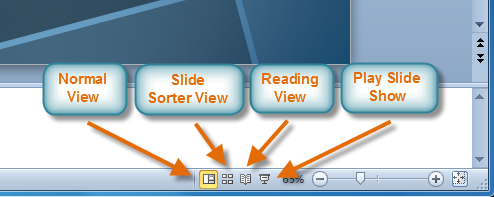 Slide view options
Slide view optionsNormal view: This is the default view where you create and edit your slides. You can also move slides in the Slides tab in the pane on the left.
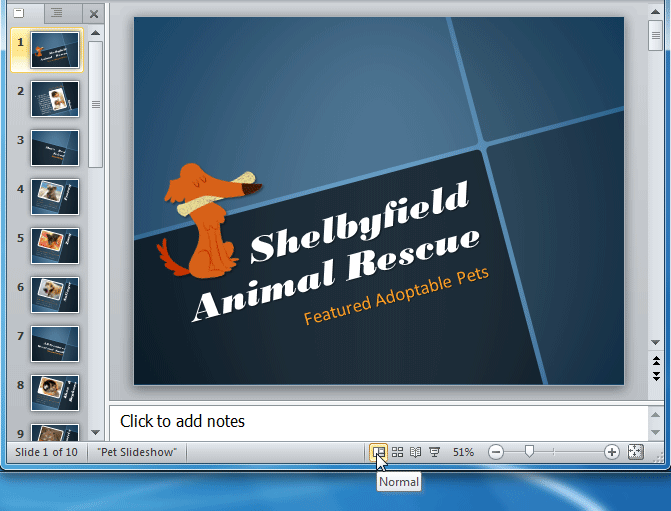 Normal View
Normal ViewSlide Sorter view: In this view, miniature slides are arranged on the screen. You can drag and drop slides to easily reorder them and to see more slides at one time. This is a good view to use to confirm that you have all the needed slides and that none have been deleted.
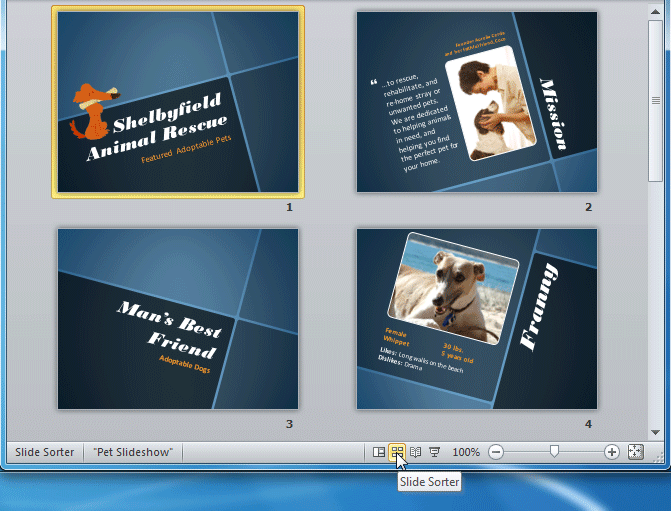 Slide Sorter View
Slide Sorter ViewReading view: This view fills most of the computer screen with a preview of your presentation. Unlike Slide Show view, it includes easily accessible buttons for navigation, located at the bottom-right.
 Reading View
Reading ViewSlide Show view: This view completely fills the computer screen and is what the audience will see when they view the presentation. Slide Show view has an additional menu that appears when you hover over it, allowing you to navigate slides and access other features you can use during a presentation.
 Slide Show View
Slide Show ViewUse the keys on your keyboard—including the arrow keys, Page Up and Page Down keys, spacebar, and Enter key—to move through the slides in Slide Show view. Press the Esc key to end the slide show.
The Outline tab shows your slide text in outline form. This allows you to quickly edit your slide text and view the contents of multiple slides at once.
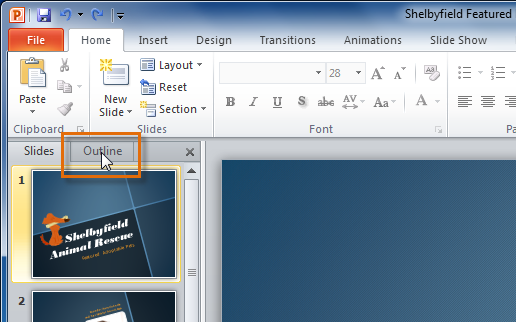 Outline tab
Outline tab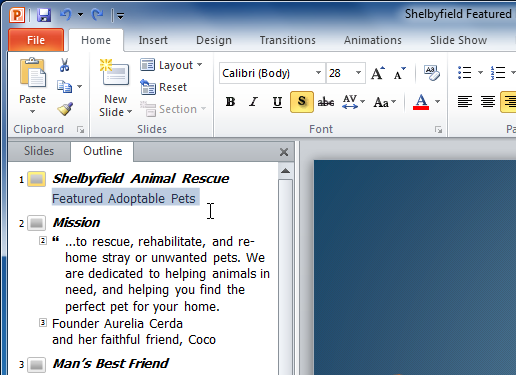 Typing in the outline
Typing in the outlineYou can organize your slides into sections to make your presentation easier to navigate. Sections can be collapsed or expanded in the left pane and named for easy reference. In this example, we will add two sections: one for dogs that are available for adoption, and another for cats and other pets.
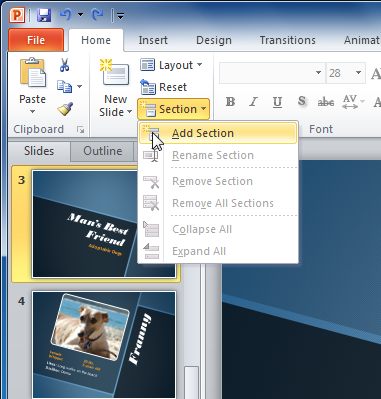 Adding a section
Adding a section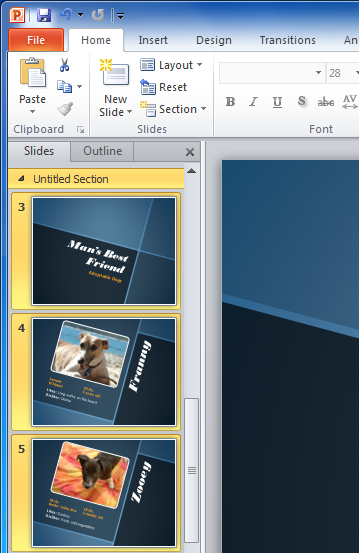 An untitled section
An untitled section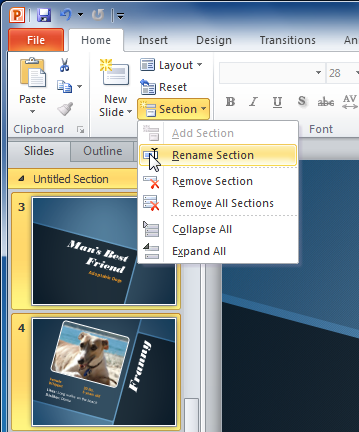 Renaming a section
Renaming a section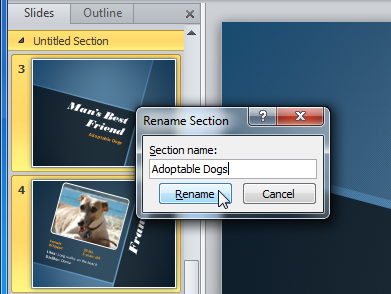 Rename Section dialog box
Rename Section dialog box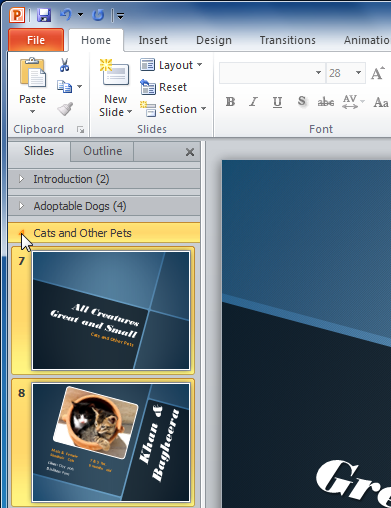 An expanded section
An expanded sectionPowerPoint gives you the ability to add notes to your slides—often called speaker notes—to help you deliver or prepare for your presentation. You can enter and view your speaker notes using the Notes pane or the Notes Page view.
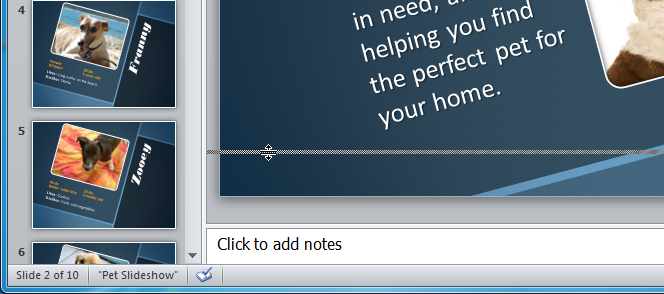 Adjusting the Notes pane
Adjusting the Notes pane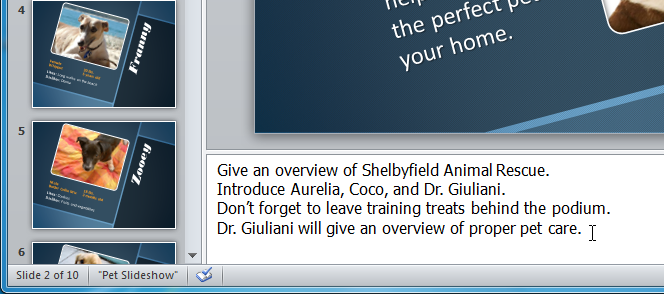 Typing in the Notes pane
Typing in the Notes pane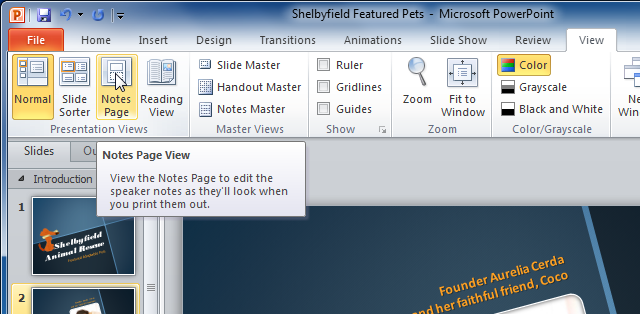 Notes Page command
Notes Page command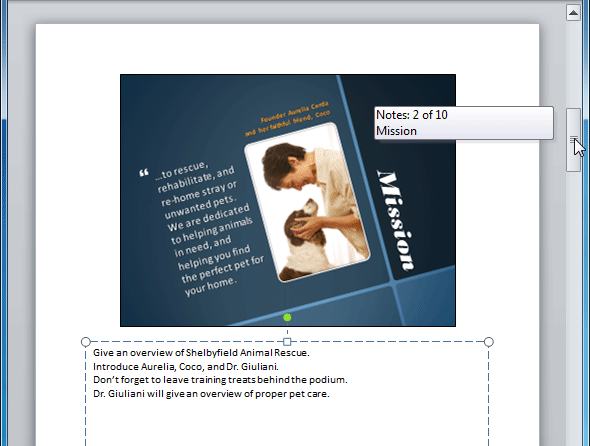 Using the Notes Page View
Using the Notes Page View/en/powerpoint2010/text-basics/content/